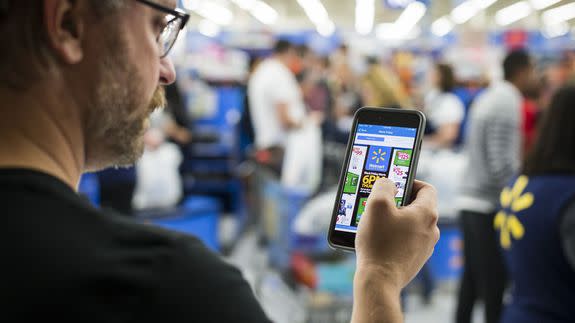The biggest winners and losers from Black Friday and Cyber Monday

This year, Black Friday and Cyber Monday made mincemeat of the internet retail record books.
SEE ALSO: You don't know me, online shopping algorithms
But there were more storylines from the long Thanksgiving weekend than just online sales. Box-and-mortar stores are fighting to stay relevant, mobile shopping is growing (on some platforms) and shoppers are acting lazier even as their spending increases.
With the numbers crunched, it's easy to see exactly what came on strong and what fell flat — so here are the winners and losers of the biggest shopping days of the year.
Winners
1. The internet
Going in, experts predicted that Black Friday 2016 would be big — but even the most optimistic projections were well short of the huge sales numbers by the time it was all over.
Adobe Digital Insights (ADI) projected $3.05 billion in online revenue for an 11.3 percent year-over-year growth rate for the day. The actual online revenue numbers blew past that mark by almost $300 million for a Black Friday record $3.34 billion — a 21.6 percent spike from 2015.
Black Friday couldn't beat out Cyber Monday (which posted a record $3.45 billion) as the biggest online retail day of the year, but it came far closer than anyone guessed. Any bets on a new champ in 2017?
2. Mobile
Buying on mobile devices was more common this year than ever before (we're all tied to our phones 24/7, after all) — and the value of those purchases broke even more records.
Thanksgiving Day had its best showing ever on mobile, with a record $449 million in revenue. Then, Black Friday became the first day ever to generate over a billion dollars in sales from mobile devices with $1.2 billion.
The wait for the second billion-dollar mobile day wasn't long, as Cyber Monday raked in $1.07 billion of its own.
3. Lazy people
According to CNBC, online shopping on Black Friday 2015 just barely edged out brick-and-mortar visits. Approximately 103 million people shopped online and 102 million bought something in stores.
In 2016, the gap between the two has stretched even further. More than 108 million shoppers electronically, while only 99.1 million bought in stores.
With Black Friday serving as the flagship in-store shopping event (it's called Cyber Monday for a reason, after all), the difference is telling. While it's too early to say that in-store sales will soon become a thing of the past, it's certainly easy to tell that in a head-to-head matchup, e-commerce is the winner. People clearly never want to put on pants and leave the house.
4. Sleeping in
Late-night and early-morning doorbuster specials, which used to be one of the biggest draws of Black Friday, appear to have lost their luster in 2016. Even when shoppers are actually getting out of the house, they're not making the extreme efforts for deals that had been a fixture of the season.
A National Retail Federation (NRF) survey found that 29 percent of in-store shoppers hit stores after 10 a.m. on Black Friday, an increase of 24 percent from 2015. Less than 15 percent of those surveyed were shopping at 6 a.m. or earlier on Black Friday.
Even more telling, only 7 percent of shoppers were in stores before 5 p.m. on Thanksgiving Day, 19 percent less than in 2015. You can blame it on food comas all you want, but it looks like going forward the path of least effort will be the one worth taking.
Losers
1. Your old, dusty iPad
Even as mobile sales numbers are on the rise, the proportion of purchases being made on tablets is lagging behind.
Last year, ADI reported that tablet sales had declined, as they made up 15 percent of online sales on Thanksgiving, 13 percent on Black Friday, and 11 percent on Cyber Monday. This year, tablet use was even less prevalent, as they made up 13 percent of sales on Thanksgiving, 11 percent on Black Friday and 9 percent on Cyber Monday.
2. Finishers
NRF's consumer survey found that only 9 percent of respondents were able to complete their holiday shopping lists on Thanksgiving weekend. Even with all of the record-breaking sales numbers, even 23 percent of consumers reported that they hadn't even "made a dent" in their list.
This loser is a bit of a winner in disguise, though. Many of those lists will eventually be finished, and that means one thing: even more holiday shopping.
“With mid-season shopping behind us, it’s not too late for retailers to tweak their online and in-store strategies to help increase traffic and see a big payoff during the last few weeks of the holiday season,” said NRF President and CEO Matthew Shay in the survey. The deals will never end.
3. Actual, you know, stores
If the internet is a winner, brick-and-mortar stores have to be losers.
As online sales rose, in-store sales fell. Reuters reports that both sales and the number of total transactions were down from 2015 levels at brick-and-mortar locations. Even foot traffic was less than in years past, as visits to stores fell a combined 1 percent from 2015 totals during Thanksgiving and Black Friday.

 Yahoo News
Yahoo News 